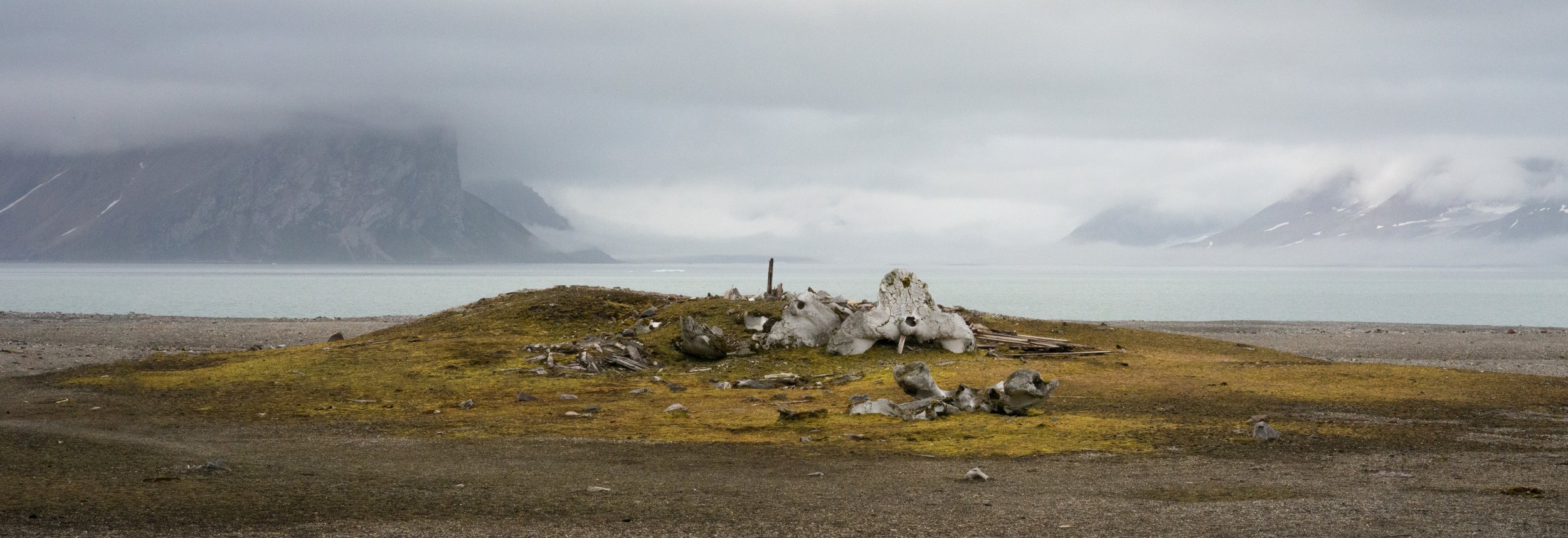Between a melting glacier and a foggy stone monolith lies a scattering of ancient whale bones. The decrepit piles of femurs, jaws, and rib cages might easily be overlooked if it wasn’t for an unexpected sight at the polar end of the Earth: moss. The bones are so old they’re hardly even white, yet leaking oil—that once precious substance—still fertilizes the loose rocks below. Faerie-like oases in a land of ice and scree.
After a whale dies, it falls to the ocean floor to provide food and harbor for an entire ecosystem of species in the abyssal zone; its skeleton a mighty relic closing one loop for another to start anew. A whale fall, as it’s called, is a potent reminder that every corporeal body contains a living ecosystem and that every dead one hosts another too. Widen your view a little and it’s clear death is simply one end among a multitude of beginnings.
The metaphor of death and rebirth is overplayed only because it’s timeless. Cycles remind us of the uncomfortable and central mortal truth: the end of us is not the end of all. Pan out and the same is true for living entities larger and more consequential than a body. Climate change-induced civilizational collapse is an ending for humans and certain species only. Earth will rebound, as it always does. Ruined edifices seed the ground for life born anew. You don’t have to look far. Already coral reefs form around fire-blackened shipwrecks on the seafloor crypt.
Not all ruins are equal, however. The chemical signature of nuclear fallout and genetically-altered organisms will outlast concrete. Perhaps the emerging wave of green architecture and net-zero design should push further than solar paneled-roofs and energy efficiency. To create structures that not only aesthetically blend in with their environment to engender other-than-human use as they crumble. Recognizing that what we build will fossilize and scatter skeletons to lay the foundation for whatever era comes next.
Modern society is steered by an unhealthy desire for immortality. Without cycles nothing grows anew. Eternity is stagnant. Death shouldn’t be celebrated, but a perspective shift can offer solace and even hope: relics reveal a continuity, that orders do in fact change. It’s only called a whale fall because of gravity. The rest rises.
“Gordillo wisely reminds us that destroyed ‘sites of power’ make ‘people less fearful of the powerful’; ruins can be a source of inspiration. Gordillo calls this the ‘core of the elite fear of rubble in moments of unrest: that the rubble, indeed, could be an invitation to remake the world differently.’” — Infrastructural Brutalism, Michael Truscello
“Unlike development, which renders place nondescript, or generic, ruins are signs of continuity. Ruins are healthy. Seeds blow or wash into the footings of fallen houses, honeysuckle and Old Man’s Beard scramble over fallen rubble, bees drift in to feed on the new blossom, birds nest in what remains of an old smokestack.” — Aurochs and Auks, John Burnside









